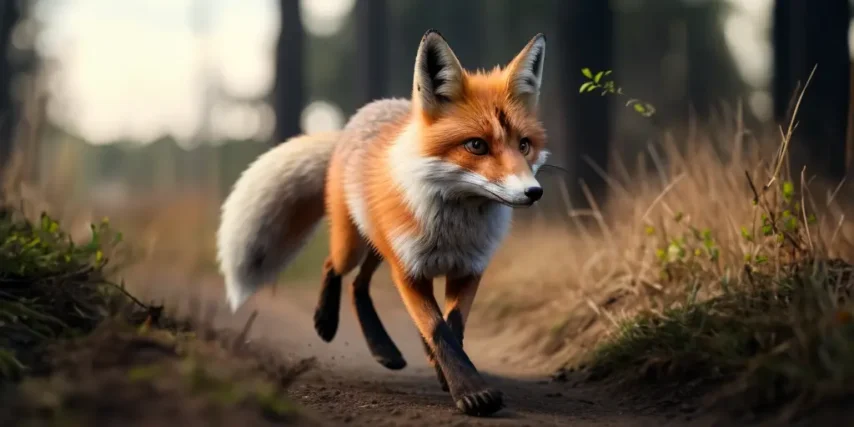The Enigma of Fox Intelligence: Unraveling the Mysteries Behind the Cunning Creatures
Foxes have long captivated human imagination, earning a reputation for intelligence that transcends the boundaries of folklore and scientific observation. From ancient myths and fables to modern cultural references, these cunning creatures have consistently been portrayed as sly, crafty, and astute. But what lies behind the label of “intelligence” attributed to foxes? In this exploration, we delve into the fascinating world of fox cognition, behavior, and evolutionary adaptations that contribute to their perceived cleverness.
Adaptations for Survival:
To understand the intelligence of foxes, it’s crucial to examine the evolutionary adaptations that have shaped their behavior. Foxes belong to the Canidae family, which also includes wolves and domestic dogs. This lineage has a rich history of coevolution with humans, resulting in the development of cognitive abilities essential for survival.
One remarkable adaptation is the fox’s keen sense of hearing and smell. Foxes have large, upright ears that enable them to detect even the faintest sounds, allowing them to locate prey, avoid predators, and communicate effectively with fellow foxes. Their acute sense of smell further enhances their ability to navigate their surroundings and locate food sources, making them highly efficient hunters.

Problem-Solving Skills:
Foxes are renowned for their problem-solving abilities, a trait often associated with high intelligence. Observations in both captivity and the wild reveal instances where foxes exhibit remarkable problem-solving skills to obtain food. One classic example is their ability to manipulate objects, such as opening latches or pushing aside obstacles, to access concealed prey.
In a study conducted by the University of Cambridge, researchers presented captive foxes with a puzzle box containing a food reward. The foxes demonstrated a high level of cognitive flexibility, adapting their strategies to unlock the box over time. This ability to learn from experiences and apply knowledge in novel situations underscores the intelligence of these captivating creatures.
Social Structure and Communication:
Foxes are not solitary beings; they thrive in social structures that involve complex communication and cooperation. Red foxes, the most widely distributed fox species, exhibit a hierarchical social system where dominant individuals maintain territories and breeding rights. The coordination within these social groups requires sophisticated communication skills.

Foxes communicate through a variety of vocalizations, body language, and scent marking. Their vocal repertoire includes barks, screams, and howls, each serving specific purposes such as warning of danger, locating mates, or coordinating group activities. The intricate nature of their communication strategies highlights the advanced social intelligence that contributes to their success as a species.
Tool Use and Manipulation:
While tool use is often associated with primates, there is evidence that foxes, too, can exhibit this behavior. In a study published in the journal “Animal Cognition,” researchers documented wild foxes using objects like balls and small pieces of wood as toys. Though not tool use in the traditional sense, this behavior suggests a level of cognitive flexibility and creativity in adapting objects for entertainment or exploration.
Additionally, foxes have been observed caching surplus food, burying it in the ground to consume later. This caching behavior not only demonstrates planning and foresight but also reflects their ability to manipulate their environment for future needs. Such behaviors contribute to the overall perception of fox intelligence.
Cultural Representations:
The intelligence attributed to foxes is not solely grounded in scientific observations; it has permeated human culture for centuries. In folklore and mythology, foxes often assume roles as tricksters or clever protagonists. The renowned Aesop’s Fables, dating back to ancient Greece, frequently feature foxes as cunning characters using their wit to outsmart others.
In Japanese folklore, the mythical creature “Kitsune” is often depicted as a fox with magical abilities and intelligence. These cultural representations not only shape our perception of foxes but also contribute to the enduring fascination with their perceived intelligence.

Conclusion:
The enigma of fox intelligence is a multifaceted tapestry woven through evolution, behavior, and cultural symbolism. From their remarkable adaptations for survival to their problem-solving prowess and complex social structures, foxes continue to captivate and inspire awe. As we unravel the mysteries behind their cunning nature, one thing becomes clear: the intelligence attributed to foxes is a testament to the marvels of the natural world, reminding us of the diverse ways in which species navigate the complexities of their environments. Whether in the pages of folklore or the scientific studies of behavior, foxes stand as intriguing ambassadors of intelligence in the animal kingdom.







